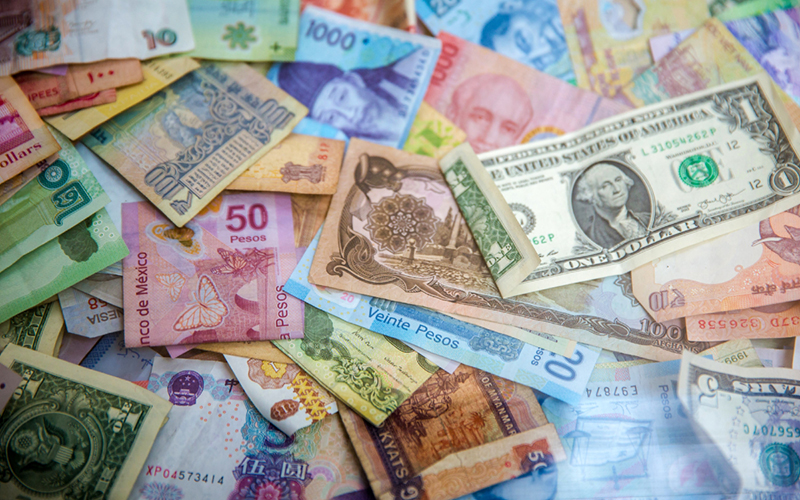How currency-linked bonds spur growth and development
Currency-linked bonds are simple but powerful instruments that fortify economies and can efficiently finance development projects.
One of the more compelling innovations in fixed income emerging markets over the last decade is the currency-linked bond issue. This is a debt security which is denominated in one currency but settled in another, usually US dollars. In the emerging or frontier market context, this allows investors to gain exposure to and income from a high yielding currency whilst avoiding the complication of buying that currency itself.
| Currency-linked bonds have proven to be a powerful innovation in Asia and the Pacific in the last decade. Photo: Jason Leung |
Currency-linked bonds are impactful in development terms because they help to plot a yield curve where government issuance is often sparse. They mobilize foreign investment by tapping into international savings pools, and they support the financing of local currency loans and projects in developing countries.
The beauty of the product is its simplicity. Currency linked bonds are documented principally via a pricing supplement from Global Medium Term Note programs thereby avoiding the need for expansive offering circulars and onerous regulatory filings. Time-to-market is quick with issues mandated, launched, documented and settled within five business days. The bonds are cleared in international central securities depositaries and listed on major stock exchanges. Investors in currency-linked bonds have disparate pedigrees and can include central banks, sovereign wealth funds, insurance companies, pension funds and private banks.
Multilateral development banks (MDBs) are benchmark issuers of currency-linked bonds, since our AAA ratings allow investors to disassociate the currency risk from the credit risk. In some cases, MDBs treat such issues as arbitrage trades, since they don’t need the proceeds in the denomination currency.
For example, when ADB issues bonds in Brazilian real, Mexican peso, Russian rubles or South African rand we simultaneously swap the proceeds into floating rate US dollars. This is because none of these countries are members of ADB and therefore we have no use for these currencies, although they do provide competitively priced sources of funding. On the other hand, when we issue currency-linked bonds in the currencies of our members we keep those funds for on-lending to development projects. This benefits borrowers by mitigating their currency risk.
Keeping the funds in local currency is not as straightforward as it sounds, since investors pay for their bond purchases in US dollars. To generate the local currency ADB undertakes an FX spot conversion selling dollars for the local currency. Spot FX settles on the second day after trade date (T+2), whereas new issues of bonds settle on the fifth day after trade date (T+5) so there is a mismatch and funding shortfall; we buy the local currency before receiving the money from bond investors. We can do this by dipping into ADB’s prudential liquidity buffers on a temporary basis to cover the three-day gap.
In frontier markets with few options for warehousing the proceeds of bond issues, ADB issues currency-linked bonds on a back-to-back basis with the underlying loan although we may build in an extra day’s cushion before disbursement.
In mainstream emerging markets such as India, Indonesia and the Philippines, we can hold the proceeds of our bond issues for significant periods of time until a project is ready for disbursement. We achieve this by investing the proceeds into government bonds of similar duration as an interest rate hedge. Since ADB’s currency-linked bond yields less than the corresponding government security, a positive carry is generated.
There are also opportunities for ADB to deliver broader development impact, by supporting local stock exchanges and working with local counterparties to manage cash and securities. For example, in February 2020, ADB issued a new 10-year, 8.5 billion Indian rupee-linked masala bond, and dual-listed the issue on our normal venue, the Luxembourg Stock Exchange, as well as the Global Securities Market of India International Exchange at Gujarat International Finance Tec-City – International Financial Service Centre.
To date ADB has issued more than US$1 billion equivalent of Indian rupee-linked masala bonds with maturities from two to ten years. We have also raised more than US$200m equivalent in Philippine peso Boracay bonds and 15-year funding with our second Indonesian rupiah Komodo bond issue. This source of competitively priced funding has provided tangible support for ADB’s private sector operations, with micro-finance, renewable energy and infrastructure projects to the value of more than US$716 million funded through currency-linked bonds over the last four years.
There are no limits on the denomination for currency-linked bonds, but investor demand can prove fickle. The pandemic has prompted a wholesale flight to quality and cash from global investors, with emerging markets and frontier markets impacted. But if investors won’t buy ADB’s local currency bonds, fortunately we can turn to alternative financing solutions to limit any fallout on project delivery.
Offshore currency-linked bond markets are helping to make currencies more resilient in developing countries by shepherding foreign investment and encouraging two-way flows. They further spur economic growth and development by complementing domestic capital markets, without crowding the government out of its own funding base.
Jonathan Grosvenor is Head, Treasury Client Solutions, ADB.











